Introduction:
Micro elements in film are some of the most important aspects of film making when it comes to the application of them. The three main elements are cinematography, sound and editing. Cinematography is the general term used for camera angles, shots and movements. Cinematography is one of the most important aspects when it comes to all films and especially thrillers, this is because it can really define the character representation and the tone of the film. For example, if there is an antagonist shown on screen, which is typical for a thriller film, there will be a use of a low angle shot to show that the antagonist is above as this asserts dominance. This can also instil fear amongst the audience as a low angle shot is used in darkness, usually where you cannot see the antagonists face. Sound is also vital to a thriller film as sound can create tension for the audience or manipulate the audiences' mood in general. An example of this is off screen sound of traffic or people speaking, this can create an environment for the audience as it lets the audience know there are other people around or the place is busy, this is shown without having extras or props visible. Editing is another paramount micro element. Editing is a post production process which puts all the raw footage together to create a sequence, this is very important as the film would not flow as well if there was no editing. Editing can also consist of filters or effects such as slow motion editing which can help put emphasis on a character or an event on screen.
Cinematography
1) Establishing Shot - We decided that the first movement in our thriller opening will be an establishing shot which will be used for the audience to understand where the antagonist has come from according to the type of costume he's wearing. The establishing shot/ extreme long shot will show the audience the antagonist from head to toe followed by the background from behind so its clear when the viewers are watching. This will make the audience question themselves who's funeral is this and why doesn't the character look upset.
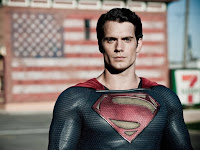 2) Medium Shot - We decided to use medium shots as they are very simple to portray what is happening in the current scene. A medium shot is simple to do and is a type of cinematography that can transition one scene to another without the audience getting too confused or distracted of what happened. We want to use these medium shots so the audience are able to see the characters more clearly where their costume, hair and make-up is clearly visible.
2) Medium Shot - We decided to use medium shots as they are very simple to portray what is happening in the current scene. A medium shot is simple to do and is a type of cinematography that can transition one scene to another without the audience getting too confused or distracted of what happened. We want to use these medium shots so the audience are able to see the characters more clearly where their costume, hair and make-up is clearly visible.  3) Close-up - We've also planning on using many close-up shots to make sure that what were trying to the audience is clearer enough, to do this, we can use the clos-up shot. When our antagonist is walking up the stairs, we want a close-up of his feet walking up the stairs. When this technique is used, the audience are also able to see the hands of dead bodies on the floor when the camera closes up to his feet. This is to create more tension for the audience asking them feel uneasy and scared for what has to come after.
3) Close-up - We've also planning on using many close-up shots to make sure that what were trying to the audience is clearer enough, to do this, we can use the clos-up shot. When our antagonist is walking up the stairs, we want a close-up of his feet walking up the stairs. When this technique is used, the audience are also able to see the hands of dead bodies on the floor when the camera closes up to his feet. This is to create more tension for the audience asking them feel uneasy and scared for what has to come after.4) Long Shot - We also planning on using long shots in our thriller opening to demonstrate the ghostly and creepy figure that appears when the antagonist turns off the light in his bedroom. The long shot is appropriate for this scene because the viewers can see the figure clearly from head to toe but still are not able to work out who this mystery person is. This creates a chilling response from the audience which is also accompanied by the back lighting.
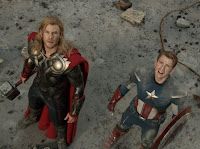 5) High Angle - We decided that we also wanted to use a high angle shot for when the antagonist walks down the stairs in frame 11. This is when the audience are able to witness the dead bodies on the staircase that they were able to see before. This is to confirm that the antagonist is a psychopath killer just in case some viewers didn't quite catch on what type of character he is. This creates a shock reaction from the audience because its a quite abrupt way to demonstrate what type of character he is.
5) High Angle - We decided that we also wanted to use a high angle shot for when the antagonist walks down the stairs in frame 11. This is when the audience are able to witness the dead bodies on the staircase that they were able to see before. This is to confirm that the antagonist is a psychopath killer just in case some viewers didn't quite catch on what type of character he is. This creates a shock reaction from the audience because its a quite abrupt way to demonstrate what type of character he is.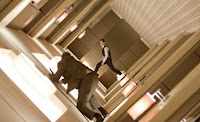
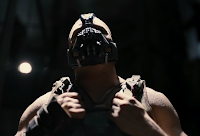 6) Tilt Shot - A tilt shot we also be used in our thriller opening. This is when the audience the first clue of this psychopath killer. When he arrives home, everything seems very normal till the camera tilts towards the floor where he picks up a piece of furniture from the floor covered in blood followed by some dead bodies lying around the floor, lifeless.
6) Tilt Shot - A tilt shot we also be used in our thriller opening. This is when the audience the first clue of this psychopath killer. When he arrives home, everything seems very normal till the camera tilts towards the floor where he picks up a piece of furniture from the floor covered in blood followed by some dead bodies lying around the floor, lifeless.7) Low Angle Shot - A low angle shot we decided to use when the antagonist walks up the stairs towards his bedroom to get change. This low angle makes him look like the dominant and superior one further making him look powerful and strong as well. The audience will feel uneasy and quite intimidated by this frame and the low angle does make him look physically bigger.
The following sounds we intend to use:

1) Diegetic Sound - We plan on using non-diegetic sound in our thriller which is just sound from the film world like the rain hitting his window of his house. This will create the tense and gloomy atmosphere better which will make the audience feel uneasy and quite scared
2) Parallel Sound - Parallel sound is when the sound you hear in a film is expected for example, we want to use parallel sound when he does simple stuff around the house and when his outside of this house. When he leaves the funeral, we hear the rain which is expected as we see it clearly in this scene. When the antagonist arrives home, we expect to hear the door slam when he shuts it on the mystery girls face.
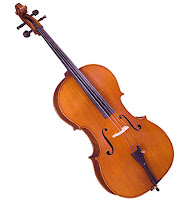 3) Contrapuntal Sound - When we are able to see the bodies scattered around the house, we decided to use contrapuntal sound in this scene with a soundtrack that doesn't quite fit with the scene as this creates a better response from the audience, no only they're afraid but confused on why these bodies are here. There will be a soundtrack that doesn't quite fit such as classical music playing in the background whilst he goes to leave his house. This will create an even bigger and noticeable contrast between the sound and what is going on which makes the audience question this mystery character even more.
3) Contrapuntal Sound - When we are able to see the bodies scattered around the house, we decided to use contrapuntal sound in this scene with a soundtrack that doesn't quite fit with the scene as this creates a better response from the audience, no only they're afraid but confused on why these bodies are here. There will be a soundtrack that doesn't quite fit such as classical music playing in the background whilst he goes to leave his house. This will create an even bigger and noticeable contrast between the sound and what is going on which makes the audience question this mystery character even more.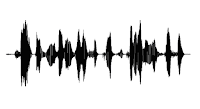 4) On-screen Sound - The on-screen sound is quite similar to diegetic sound, I want the audience to able also hear the on-screen sound that they are also able to see for example when the antagonist closes the door and leaves the house we can hear the rain and wind and the muffled chatter of other people on the street.
4) On-screen Sound - The on-screen sound is quite similar to diegetic sound, I want the audience to able also hear the on-screen sound that they are also able to see for example when the antagonist closes the door and leaves the house we can hear the rain and wind and the muffled chatter of other people on the street.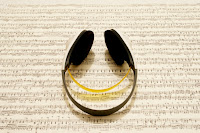 5) Non-diegetic Sound - We also decided that we wanted non-diegetic sound used in our thriller opening. The non-diegetic sound which is not part of the film world. We plan on using diegetic sound when we begin to edit our thriller. When the anti-hero appears, we plan on using the diegetic sound of a sound track to create more tension for the audience which will create a more chilling experience. This further creates suspense and shock for the audience as this was unexpected, moreover, this is the first appearance the anti-hero makes which the audience are introduced to which makes them even more uneasy.
5) Non-diegetic Sound - We also decided that we wanted non-diegetic sound used in our thriller opening. The non-diegetic sound which is not part of the film world. We plan on using diegetic sound when we begin to edit our thriller. When the anti-hero appears, we plan on using the diegetic sound of a sound track to create more tension for the audience which will create a more chilling experience. This further creates suspense and shock for the audience as this was unexpected, moreover, this is the first appearance the anti-hero makes which the audience are introduced to which makes them even more uneasy.Editing:
One of the editing techniques we will be using is slow motion editing. This will be at the very beginning of the opening as the antagonist is walking from the graveyard. We will use this to put emphasis on the antagonist and his movements, as well as the environment around him, this is to show the audience where the antagonist is. Although they do not know who he is at this moment in time, it will create confusion amongst the audience as they will question who he is and what he is doing in a graveyard during the slow motion sequence.
Another editing technique we will be using are straight cuts, these are simple cuts that will be applied throughout the opening to show a change in the shot or to show the next shot. For example a straight cut would be from the graveyard to the inside of a house where the door is visible, and the antagonist will then walk in. We will not see his opening the door or see how he enters the premises, the straight cut will help with that.
We will also be using jump cuts, this is in combination with the slow motion editing as the antagonist is walking away from the graveyard, this is to speed up his movement but not so fast that the audience aren't able to see the environment he is in.
Other editing techniques would be transitions so that the change from the titles and production logos to the opening itself is very smooth and does not look out of place with the tone or pace of the opening.
Filters will also be used when appropriate to convey a darker tone, for example when the antagonist is walking through the graveyard which is conventionally a gloomy and desolate environment there would be a grayscale filter.
In conclusion, I have decided that in terms of cinematography I will vary the shots as much as possible to keep the audience very interested, this is so the shots do not get repetitive and the audience are constantly intrigued. When appropriate the shots will be used such as high angle shots, establishing shots, medium and long shots. Non diegetic and on screen sound will be the most significant sound techniques I will use as the soundtrack, the sound effects and the sound showing the characters movements will be very important in creating the audiences' reaction. The soundtrack is vital as it will set the overall pace and tone of the opening, while the on screen sound will give the opening some life such as footsteps or doors being shut. When editing, similarly to cinematography I will use as many techniques as I can where appropriate to keep the audience interested.


This is a proficient piece, with clear thought and planning evident. You have discussed a range of techniques and their desired impact on your audience.
ReplyDelete- In all your sections, discuss how each technique is conventional for the thriller genre.
- Will you be using any other editing techniques in your opening?
- Include a conclusion in which you summarise all the different techniques you are planning on using and explain why they are conventional to thrillers.
With the additional changes now made, this is now an excellent post with excellent links made to the effect you wish to illicit on the audience.
ReplyDelete